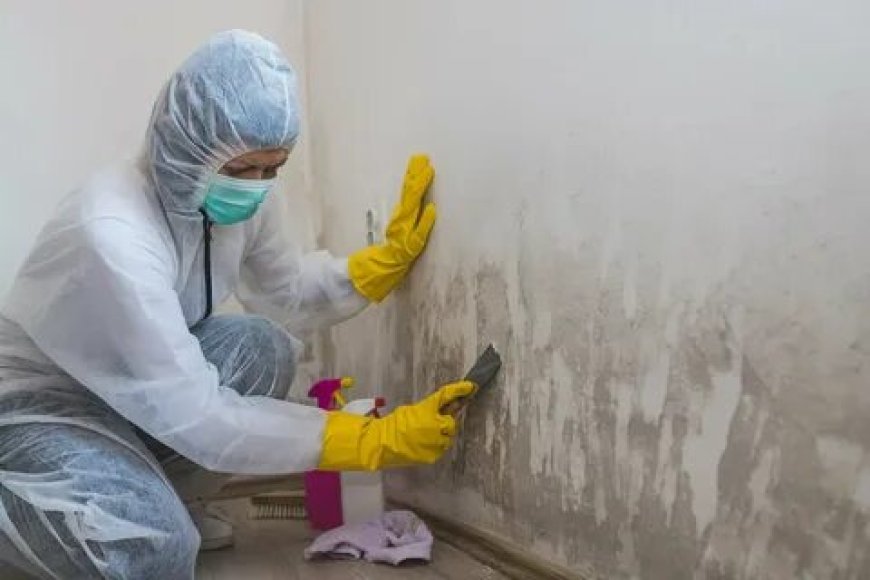How to Handle Damp and Mould Issues Until Your Landlord Fixes It

Living in a property plagued by damp and mould is not only uncomfortable but also poses significant health risks. These issues are more common than many people realize and are often symptoms of underlying structural or ventilation problems that landlords are legally responsible for resolving. Unfortunately, not all landlords act swiftly, leaving tenants to deal with the unpleasant consequences. If you’re struggling with housing disrepair due to damp and mould, it’s important to understand your rights and the steps you can take to protect yourself until the problem is resolved.
At Housing Disrepair Team, we support tenants across the UK who are dealing with a range of property issues, from persistent mould and water leaks to pest infestations and broken heating systems. We specialize in tenant claims and ensure that landlords meet their legal responsibilities. If your health or home has been affected by your landlord’s inaction, you may be eligible to Damp and Mould claim and other related housing disrepair.
What Causes Damp and Mould in Rented Properties?
Damp and mould are typically the result of excessive moisture in the home. This can come from rising damp, penetrating damp, or condensation, each caused by different structural or environmental factors:
-
Rising damp is moisture that travels up from the ground through walls due to a failed damp-proof course.
-
Penetrating damp results from water seeping through external walls or roofs, often caused by broken gutters, leaking pipes, or poor maintenance.
-
Condensation is the most common form and occurs when warm, moist air comes into contact with cold surfaces, leading to mould growth.
Regardless of the cause, landlords are legally required to investigate and fix damp and mould problems that are caused by faults in the structure or maintenance of the property.
Immediate Steps Tenants Can Take
While it’s the landlord’s job to fix the root of the problem, there are a few things tenants can do to manage the situation temporarily:
-
Ventilate the property regularly by opening windows and using extractor fans if available.
-
Wipe down mould-affected surfaces with mould removal solutions or diluted bleach to prevent it from spreading.
-
Avoid drying clothes indoors as this increases moisture in the air.
-
Report the problem in writing to your landlord or letting agent as soon as possible and keep copies of all correspondence.
-
Take photos and videos to document the condition of your home.
These steps don’t replace your landlord’s responsibilities, but they can help protect your health and reduce further damage while waiting for repairs.
Your Landlord’s Legal Responsibilities
Under the Landlord and Tenant Act 1985, landlords must ensure that rented properties are fit for human habitation. This includes making sure the property is free from damp and mould. If the problem is caused by disrepair—such as a leaking roof, broken guttering, or lack of insulation—your landlord is legally required to fix it.
If you’ve reported the issue and your landlord hasn’t acted within a reasonable timeframe, you may have grounds to escalate the matter. In severe cases, you may be entitled to claim for compensation if the disrepair has affected your health, quality of life, or caused damage to your belongings.
How Housing Disrepair Team Can Help
At Housing Disrepair Team, we take the pressure off tenants by handling the legal side of your complaint. We offer:
-
Free initial consultation to assess your case
-
Full claim management, including communication with your landlord
-
Expert legal support to pursue repairs and compensation
-
No win, no fee representation, so there’s no financial risk to you
We’ve helped hundreds of tenants across the UK successfully take action against negligent landlords. Our experienced team works tirelessly to ensure you live in a safe, healthy home—and we’ll fight for your right to fair treatment and compensation when necessary.
Claiming Compensation for Damp and Mould
If your landlord has ignored your complaints or failed to make timely repairs, and you’ve suffered as a result, you could be eligible for compensation. Damages may include:
-
Health-related issues such as asthma, respiratory infections, or allergies
-
Damage to personal belongings like clothing, furniture, or electronics
-
Inconvenience or discomfort caused by being forced to live in poor conditions
To strengthen your claim, we recommend keeping detailed records including photographs, GP letters if your health has been affected, and all written communication with your landlord. Once you’ve gathered the necessary information, our team will guide you through the entire claims process—from evaluation to settlement.
When to Take Legal Action
You don’t have to wait months for action. If your landlord hasn’t addressed the problem within a reasonable timeframe after being notified—usually 14 to 28 days—you are entitled to take further steps. This can include reporting them to your local council or starting a housing disrepair claim with professional assistance.
Housing Disrepair Team is here to make that process as smooth and stress-free as possible. We understand how difficult it is to live in a home where you feel unsafe or uncomfortable. That’s why our team is dedicated to helping tenants hold their landlords accountable and restore their right to decent living conditions.
Final Thoughts
Living with damp and mould is more than just a nuisance—it’s a serious health and safety concern. If your landlord has failed to address the issue despite your reports, don’t suffer in silence. Take action today with the help of Housing Disrepair Team, your trusted partner in tenant claims. We’ll help you get the repairs you need and the compensation you deserve.
Reach out to us now for a free consultation and take the first step toward a healthier, safer home.


































































![https //g.co/recover for help [1-866-719-1006]](https://newsquo.com/uploads/images/202506/image_430x256_684949454da3e.jpg)






















![How Smart PMs Scale Their Careers in Any Org [TPG Live Recap]](https://tpgblog.com/wp-content/uploads/2025/06/2025-06-12-thumbnail-action.png?#)



















































